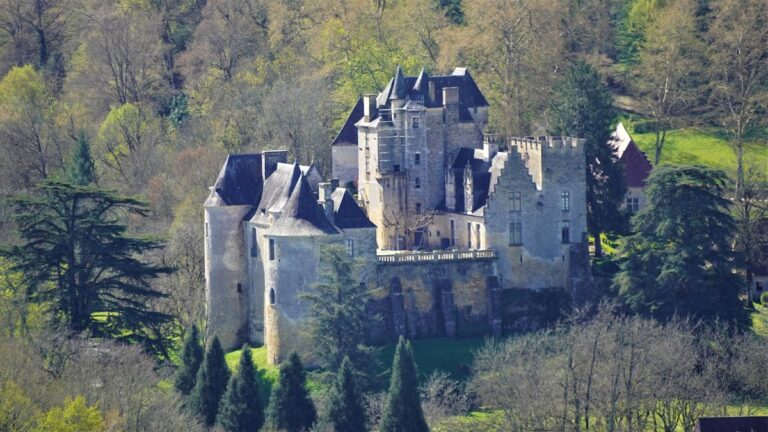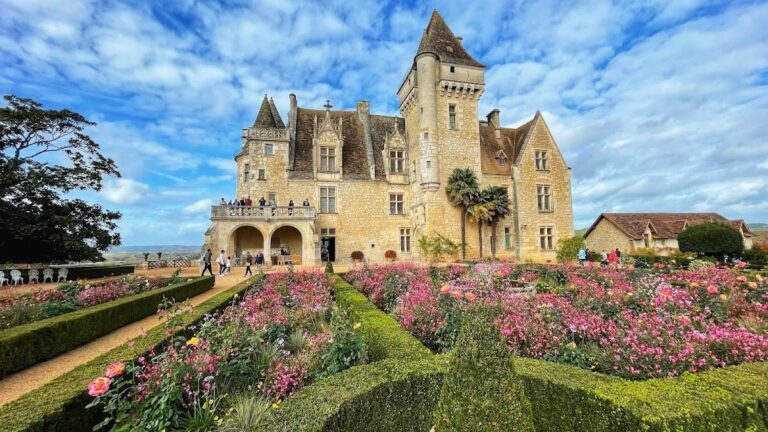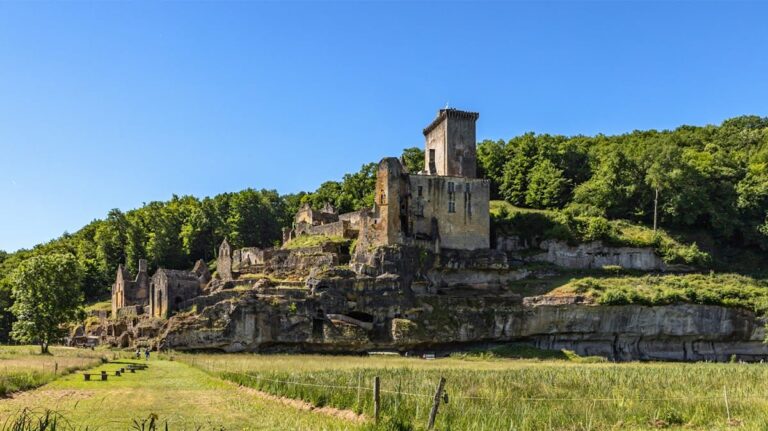Castle of Beynac: A Medieval Fortress in Dordogne, France
Visitor Information
Google Rating: 4.6
Popularity: High
Google Maps: View on Google Maps
Official Website: www.chateau-beynac.com
Country: France
Civilization: Medieval European
Remains: Military
History
The Castle of Beynac stands in Beynac-et-Cazenac, a commune in the Dordogne department of southwestern France. It was built in the 12th century by the barons of Beynac, a noble family who sought to control the strategic Dordogne valley. This location placed the castle on the frontier between French and English territories during the turbulent Hundred Years’ War.
The earliest record of the castle dates to 1115, associated with Mainard de Beynac and his family. The Beynacs held extensive lands and supported the abbey of Cadouin through donations. Mainard’s son, Adhémar de Beynac, took part in the Second Crusade but died without heirs in the late 12th century. Following his death, Richard the Lionheart, then King of England, granted the castle to his knight Mercadier. Mercadier’s assassination around 1200 led to the castle returning to the Beynac family.
In 1214, during the Albigensian Crusade against the Cathar heresy, Simon de Montfort accused the Beynac lords of heresy. He destroyed the castle’s main tower and walls, but the family regained control within a year and rebuilt the fortifications. Throughout the Hundred Years’ War, Beynac remained a French stronghold. Despite ongoing conflicts with the English-held Castelnaud castle across the river, Beynac was never captured.
During the 16th century religious wars, the Beynac family converted to Protestantism and supported the Huguenots. In 1585, King Henry IV ordered significant remodeling of the castle’s defenses to strengthen its military capabilities. The male line of the Beynac family ended in 1753, and the castle passed by marriage to the Beaumont family, who added Beynac to their name. The castle was abandoned in the late 19th century but later restored by a Beaumont marquis, who eventually went bankrupt.
In 1944, the castle was officially classified as a historic monument. In 1962, Lucien Grosso purchased the property and undertook extensive restoration work to revive its medieval appearance. The castle has also served as a filming location for historical and fantasy movies, including “Joan of Arc” (1999) and “The Visitors” (1993).
Remains
The Castle of Beynac is perched atop a limestone cliff about 150 meters above the Dordogne River’s right bank. Its position offers natural protection on one side due to the steep drop, focusing defensive structures on the plateau side. The castle’s layout forms an irregular quadrilateral extended southward by a bastion shaped like a spur.
The oldest surviving structure is a large, square Romanesque donjon (main tower) dating from the 12th or 13th century. This tower has few openings, a machicolation (a projecting stone gallery with openings for dropping objects on attackers), a small watch turret called an échauguette, and a narrow spiral staircase tower resembling a buttress. The donjon is topped by a crenellated terrace.
Next to the donjon lies a residential wing from the same period, which was expanded and altered during the 16th and 17th centuries. On the opposite side, another residential wing partly dates from the 14th century. This wing includes a courtyard and a square staircase leading to apartments from the 17th century.
Inside, the castle features 17th-century wood paneling and painted ceilings. The main hall, once the meeting room of the Périgord Estates, contains a Renaissance-style sculpted fireplace decorated with bucrania, which are carved ox skulls symbolizing strength. A small oratory within the castle is adorned with 15th-century frescoes depicting biblical scenes such as the Pietà, Saint Christopher, and the Last Supper featuring Saint Martial as the host.
The castle’s defensive system on the plateau side includes a double crenellated enceinte (a fortified curtain wall), a double moat with one deepening a natural ravelin (a triangular fortification), and two barbicans (outer defensive gateways). These features form a strong fortification network.
The castle also houses a rich collection of tapestries illustrating hunting scenes and noble life. A reproduction of the Beaumont-Beynac family banner is displayed. A door with an accolade lintel, an arched decorative stone above the door, is decorated with three rosettes.
Today, the Castle of Beynac is remarkably well preserved, making it one of the best-conserved medieval castles in the Dordogne region. Restoration efforts have maintained its medieval character and structural integrity.










